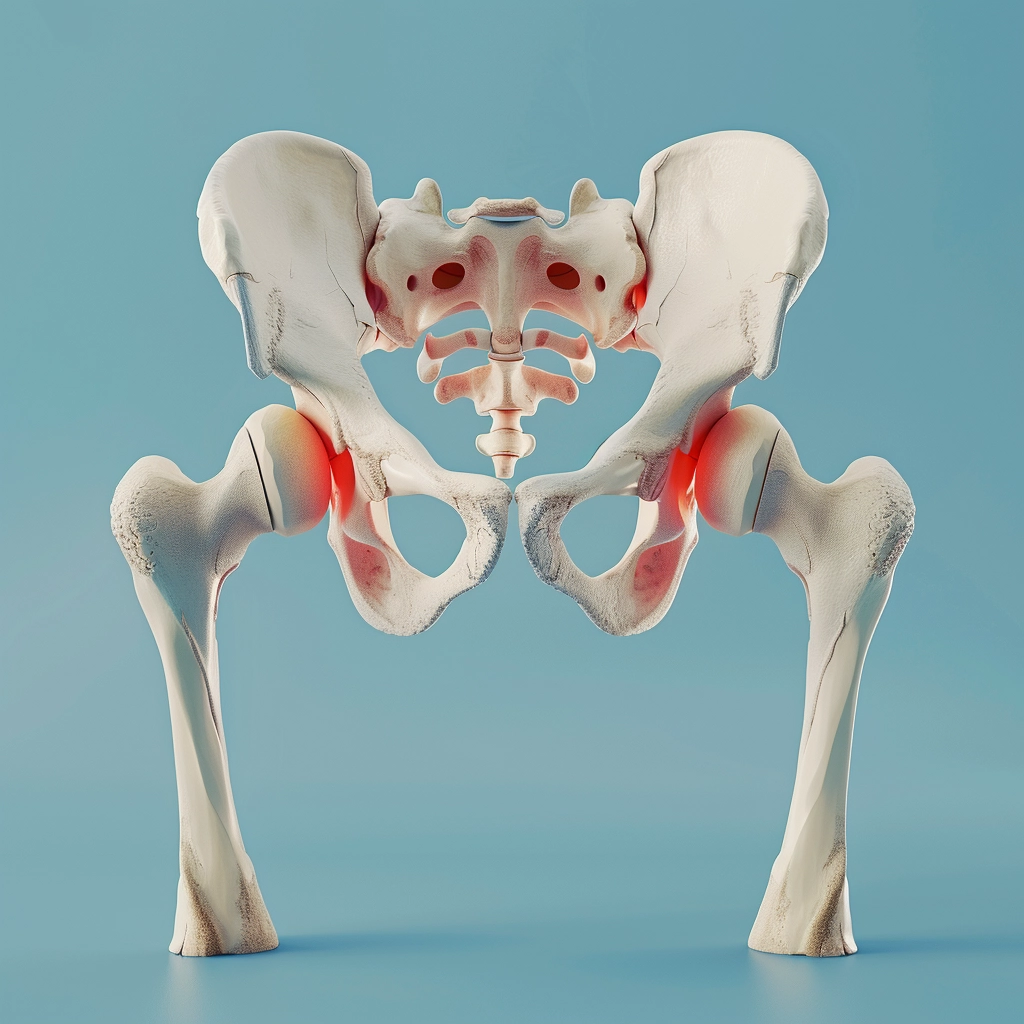Picture this: you’re going about your day when suddenly, a sharp pain shoots down your leg, making it difficult to walk or even sit comfortably. You might be experiencing sciatica, a common condition that affects millions worldwide. But fear not! In this blog post, we will explore nine effective sciatica exercises that can help alleviate your pain and get you back on your feet.
Key Takeaways
- Experience sciatica relief with 9 targeted exercises, from hamstring stretches to aerobic activities.
- Strengthen your core and lower back for improved spinal alignment & pain reduction.
- Follow tips for safe exercise routines. Seek professional guidance if experiencing debilitating symptoms.

Understanding Sciatica: Causes and Symptoms
Sciatica is a condition caused by inflammation of the sciatic nerve, which can result in back pain, particularly in the buttocks or leg pain. This nerve originates in the lower back, runs down the back of each leg, and is responsible for providing movement and sensations in the legs and feet. The most common causes of sciatica are a herniated disc, lumbar spinal stenosis, or degenerative disc disease. These issues can compress the sciatic nerve, leading to the characteristic sciatic pain that radiates down the leg, potentially reaching the foot. Sciatica symptoms can vary, ranging from mild discomfort to severe pain, and can also include tingling, numbness, and muscle weakness.
Despite the discomfort and debilitation that sciatica can cause, there is a ray of hope. Engaging in specific exercises can ease the pain caused by sciatica and potentially expedite recovery. With the integration of these exercises into your daily routine, you can manage your pain more effectively and boost your overall well-being.
The Importance of Exercise for Sciatica Relief
Exercise is a key component in mitigating sciatica pain. It assists in:
- Realigning the spinal discs
- Easing pressure on the sciatic nerve
- Lessening pain
- Enhancing flexibility and movement
Exercise has been scientifically proven to provide more relief than bed rest in the case of sciatica pain. Staying active with daily physical activities may not be as beneficial in alleviating this type of pain.
There are three main types of exercises that can help you manage your sciatica pain: core strengthening exercises, hamstring stretches, and aerobic activities. A more in-depth look at each of these categories will shed light on how they can assist in providing relief.

Core Strengthening Exercises
Building strength in your core is vital for recovery from sciatica flare-ups and prevention of future pain. By building strength in the muscles of your hips and lower back, you can provide much-needed support for your spine. Examples of effective core strengthening exercises include:
- Knee-to-chest stretch
- Bird dog
- Cat-cow stretch
- Bridge
- Plank
It’s advisable to undertake core strengthening exercises on a regular basis, ideally 2-3 times per week. However, it’s important to avoid certain movements, such as squatting, twisting, and high-impact activities, which might aggravate your sciatica.
Hamstring Stretches
By reducing muscle tightness and stress on the lower back, hamstring stretches can alleviate sciatica pain. There are several types of hamstring stretches that you can try, such as the seated glute stretch, towel hamstring stretch, and scissor hamstring stretch.
To get the most out of hamstring stretches, aim to hold each stretch for 30-60 seconds, repeating the stretch 3-5 times throughout the day. In just 10 seconds, you can start feeling the benefits of the stretch. Remember to take precautions while performing these stretches, such as avoiding overstretching, maintaining proper form, and gradually increasing intensity.
Aerobic Activities
For general fitness and pain relief, aerobic exercises like walking are recommended. They help increase overall fitness, promote better blood flow, and even trigger the release of endorphins, hormones which can help reduce pain. Walking is an effortless way to reap the benefits of aerobic exercise.
Walking offers multiple benefits including:
- Acting as an anti-inflammatory
- Promoting weight loss
- Improving muscle growth
- Supporting natural recovery
All these can contribute to alleviating sciatica pain. However, it’s important to ensure you have a good walking technique and posture to minimize the risk of worsening the pain.
To get the most out of aerobic exercises for sciatica relief, aim to do them daily or at least 3 to 5 times a week for a minimum of 20 to 30 minutes.
9 Targeted Exercises for Sciatica Pain Relief
Having covered the significance of exercise and the various exercises beneficial for sciatica pain relief, the next step is to explore nine targeted exercises:
- Seated glute stretch
- Standing hamstring stretch
- Reclined figure-4 stretch
- Cobra pose
- Knee-to-chest stretch
- Posterior pelvic tilt
- Bridge pose
- Cat-cow stretch
- Supine piriformis stretch
Adding these exercises to your routine can help ease sciatica pain and enhance overall well-being.
Seated Glute Stretch
The seated glute stretch targets the piriformis muscle, which can compress the sciatic nerve when tight. When performed correctly, this stretch can help you create space in the spine and relieve pressure on the sciatic nerve.
To perform a seated glute stretch:
- Sit upright in a chair.
- Cross one leg over the other, with the outside of your foot resting on your other knee.
- Lean forward, keeping your back straight.
- You should feel a satisfying stretch in your glutes.
- Hold the stretch for 30 seconds.
- Repeat with the other leg for even more benefits.
Aim to perform this stretch at least three times a week for the best results.
Standing Hamstring Stretch
The standing hamstring stretch helps alleviate sciatica pain by reducing tension in the lower back. To perform the standing hamstring stretch, follow these steps:
- Stand with your feet closer than shoulder-width apart.
- Step forward with your left foot.
- Bend at the hips, placing your hands on your thigh.
- Keep your left leg straight and lean forward from your hips until you feel a satisfying stretch in the back of your left leg.
- Hold for 30 seconds.
- Repeat on the other leg for even more benefits.
Performing the standing hamstring stretch daily or as needed can help you find relief from sciatica pain. Be sure to take precautions while performing this stretch, such as avoiding overstretching, maintaining proper form, and gradually increasing intensity.
Reclined Figure-4 Stretch
The reclined figure-4 stretch targets the piriformis and glute muscles, relieving pressure on the sciatic nerve. To perform this stretch:
- Lie on your back with your legs straight.
- Lift your affected leg and bend your knee.
- With your opposite hand, reach across your body and gently pull your knee towards your opposite shoulder.
- Hold the stretch for 20-30 seconds, breathing deeply to maximize the benefits.
- Repeat on the other side if needed.
Performing the reclined figure-4 stretch regularly can help reduce sciatica pain by stretching and lengthening the piriformis muscle, which often becomes tight and contributes to sciatic nerve compression. Aim to perform this stretch at least three times a week for the best results.
Cobra Pose
The cobra pose strengthens the lower back muscles, providing support for the spine. To perform the cobra pose, follow these steps:
- Lie face down with your palms flat on the ground near your shoulders and legs extended.
- Push your upper body off the ground, keeping your hips and legs on the floor, and arch your back.
- Hold the pose for a few breaths, focusing on stretching the spine and relieving tension.
The cobra pose can be beneficial for individuals with sciatica, but caution is key. It is important to ensure that you are not performing the pose too quickly or too deeply, as this can overstress the sciatic nerve and increase symptoms.

Knee-to-Chest Stretch
The knee-to-chest stretch helps relieve pressure on the sciatic nerve by stretching the lower back and glute muscles. To perform the knee-to-chest stretch:
- Lie on your back with your knees bent and feet flat on the ground.
- Bring one knee, for example, your left knee, towards your chest while keeping the other foot flat on the ground.
- Hold the stretch for 20-30 seconds and switch legs.
Performing the knee-to-chest stretch regularly can help alleviate tension and pressure on the sciatic nerve, providing relief from pain. Aim to perform this stretch 2 to 3 times a day for the best results.
Posterior Pelvic Tilt
The posterior pelvic tilt exercise strengthens the core muscles and helps maintain proper spinal alignment. To perform the posterior pelvic tilt:
- Lie face up on a bed with knees bent and feet flat.
- Draw in the abdominals to flatten the lower back into the bed.
- Hold for 5 seconds.
- Return to the starting position.
Performing the posterior pelvic tilt exercise at least once a day can help you find relief from sciatica pain and improve your overall well-being.
Bridge Pose
The bridge pose strengthens the glutes and lower back muscles, providing support for the spine. To perform the bridge pose, follow these steps:
- Lie on your back with your knees bent and feet flat on the floor, hip-width apart.
- Tighten your core and draw in your belly.
- Inhale and lift your hips off the floor, aligning them diagonally with your knees and shoulders.
- Hold the pose for a few breaths.
- Exhale and slowly lower your hips back down to the floor.
Performing the bridge pose regularly can help you manage your sciatica pain and improve your overall well-being. Aim to perform this pose daily or at least three times a week for the best results.
Cat-Cow Stretch
The cat-cow stretch improves spinal flexibility and helps relieve sciatica pain. To perform the cat-cow stretch:
- Begin on your hands and knees, with your hands directly under your shoulders and your knees under your hips.
- Inhale as you arch your back, lifting your chest and tailbone toward the ceiling (cow pose).
- Exhale as you round your back, tucking your tailbone under and bringing your chin toward your chest (cat pose).
- Repeat this movement several times, focusing on increasing spinal flexibility and relieving tension.
Performing the cat-cow stretch regularly can help alleviate sciatica pain by releasing tension from the upper back and neck. Aim to perform this stretch daily or at least three times a week for the best results.
Supine Piriformis Stretch
The supine piriformis stretch targets the piriformis muscle, which can cause sciatica pain when tight. To perform the supine piriformis stretch:
- Lie on your back with your legs flat.
- Confidently bend the affected leg at the knee.
- Reach across your body with your opposite hand and pull the knee towards the opposite shoulder with determination.
- Hold the stretch for 20-30 seconds.
- Trust yourself to repeat on the other side if needed.
Performing the supine piriformis stretch regularly can help reduce sciatica pain by stretching and lengthening the piriformis muscle, which often becomes tight and contributes to sciatic nerve compression. Aim to perform this stretch at least three times a week for the best results.
Tips for Safe and Effective Sciatica Exercise Routines
Safety and effectiveness should always be prioritized when initiating a sciatica exercise routine. Here are some guidelines to follow:
- Ensure you maintain proper posture during exercises to prevent aggravating your sciatica pain.
- Modify activities as needed to avoid irritating the sciatic nerve.
- Always listen to your body’s signals. If you experience increased pain or discomfort during an exercise, stop immediately and consult with a healthcare professional.
Before starting any exercise program for sciatica pain, it’s always a good idea to seek professional guidance from a physical therapist or healthcare provider. They can help you with physical therapy to:
- Accurately diagnose your sciatica pain
- Rule out any serious underlying issues
- Design a personalized exercise program tailored to your specific needs and goals.

When to Consult a Healthcare Professional
Recognizing when to seek medical advice for sciatica pain is vital for your well-being. If you experience any of the following symptoms, it’s important to seek medical help as soon as possible:
- Debilitating pain
- Numbness
- Tingling
- Muscle weakness
- Loss of bowel or bladder control
These symptoms may indicate a more serious underlying condition that requires prompt attention and treatment.
Effectively managing sciatica pain necessitates accurate diagnosis and appropriate treatment. Attempting to self-treat sciatica pain without professional guidance may lead to further irritation of the sciatic nerve or even worsen the condition.
Always consult a healthcare professional before starting a new exercise program or making significant changes to your existing routine.
Summary
In conclusion, sciatica pain can be a challenging and debilitating condition, but incorporating targeted exercises into your daily routine can help you find relief and improve your overall well-being. By focusing on core strengthening exercises, hamstring stretches, and aerobic activities, you can alleviate your sciatica pain and regain control of your life. Remember to always maintain proper posture, modify activities as needed, and consult a healthcare professional before starting any new exercise program. With dedication and perseverance, you have the power to ease your sciatica pain and enjoy a more active, pain-free life.
Frequently Asked Questions
What is the very best exercise for sciatica?
The very best exercise for sciatica is the Lie on your Back Knee-to-Chest Stretch, which involves lying on the back with the legs extended before gently bringing one knee to the chest while keeping the lower back pressed to the floor, and holding this position for up to 30 seconds.
What are the top 3 exercises for sciatica?
The top 3 exercises for sciatica include Lying Knee-to-Chest Stretches, the Third Exercise you should do for sciatica, and Lower Trunk Rotation. These exercises can help reduce sciatic nerve pain caused by degenerative disc disease and improve your overall health.
What is the quickest way to get rid of sciatica?
The quickest way to get rid of sciatica is by using hot and cold packs, stretching exercises, over-the-counter medications, and alternative therapies. Additionally, physical therapy or seeing a doctor may provide long term relief.
What should you not do with sciatica?
To manage sciatica, it’s important to avoid exercises that stretch the hamstrings, lifting heavy weights without warming up, certain exercise machines, bed rest, bending over, sitting for more than 20 minutes in the wrong chair, and twisting your spine.
What are the main causes of sciatica?
Sciatica is typically caused by a herniated disc, spinal stenosis, or degenerative disc disease.













